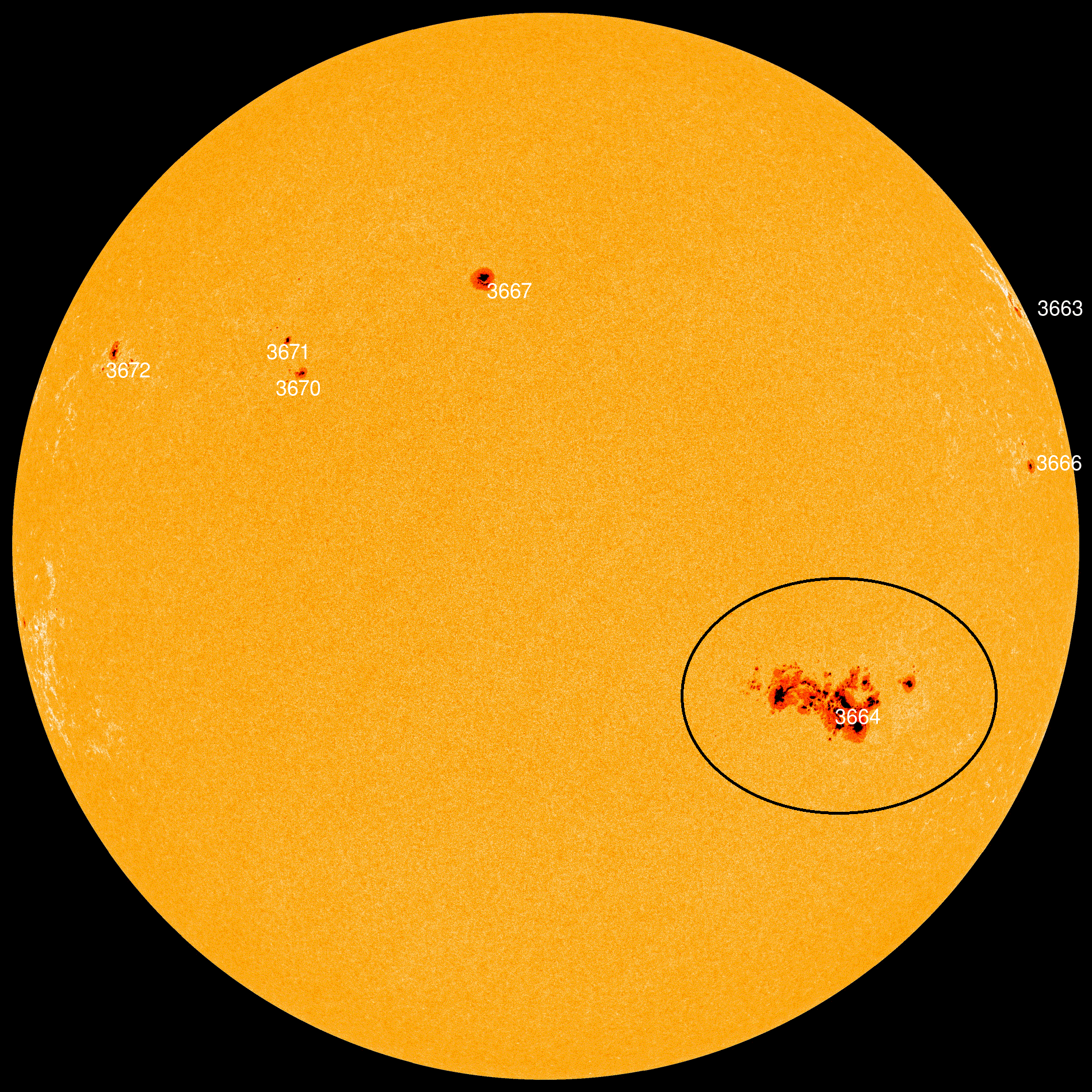****Very large sunspot region unleashes five CMEs towards Earth…”severe” geomagnetic storm beginning tonight with auroras much farther south than usual...potential other impacts****
Paul Dorian
AR3664 has rotated around the Earth-facing side of the sun and unleashed as many as 5 CME’s in recent days. Image courtesy spaceweather.com, NOAA
Overview
A very large sunspot region known officially as AR3664 has unleashed a series of coronal mass ejections (CMEs) towards Earth and a “severe” geomagnetic storm is a likelihood beginning as early as tonight and lasting into the weekend. According to NOAA, the first three of these CMEs could merge and arrive later tonight and early Saturday and two others will follow close behind. This is the first “severe” watch issued by NOAA in 19 years and the results could be auroras much farther south than usual and potentially, some impacts to communications and power grid-related infrastructure.
NOAA has issued its first “severe” geomagnetic storm watch since 2005 with potential impacts on Earth as early as late Friday and continuing through the weekend.
Details
A very large sunspot region known officially as AR3664 has unleashed a series of CMEs towards the Earth all of which may combine to generate a “severe” geomagnetic storm event beginning as early as tonight and lasting into this weekend. The sunspot region is so large it was being compared by many to the size of the sunspot region in September 1859 that resulted in what is now known as the “Carrington Event”. Though likely not as potent as that monster CME, NOAA’s models do suggest this one may be very intense in its own right classifying as “severe” which is the first such designation since 2005. A “severe” designation for a solar storm can be compared to a “category 4” hurricane classification and there is even an outside chance this solar storm reaches “extreme” or “category 5” status.
NOAA’s aurora forecast calls for possible viewing well down into the middle latitudes as the first of the CMEs arrive into Earth’s upper atmosphere.
According to NOAA’s forecast model, the first three of the CMEs may merge into a “cannibal” CME when fast-moving material catches up and overtakes slower-moving CMEs in front of them. This so-called cannibal CME is expected to arrive later tonight into early Saturday and it can spark auroras much farther south than normal and perhaps even into the tropics (30 degrees North and lower)…very rare indeed. Following close behind, there will be two other CMEs that will extend the solar storm into later on during the weekend with additional chances for northern lights in unusual locations. In terms of other possible impacts, there is always the threat that a geomagnetic storm of this magnitude can cause disruptions to electronic devices such as GPS and to parts of power grids and all of this can begin as early as Friday night.
Meteorologist Paul Dorian
Arcfield
arcfieldweather.com



